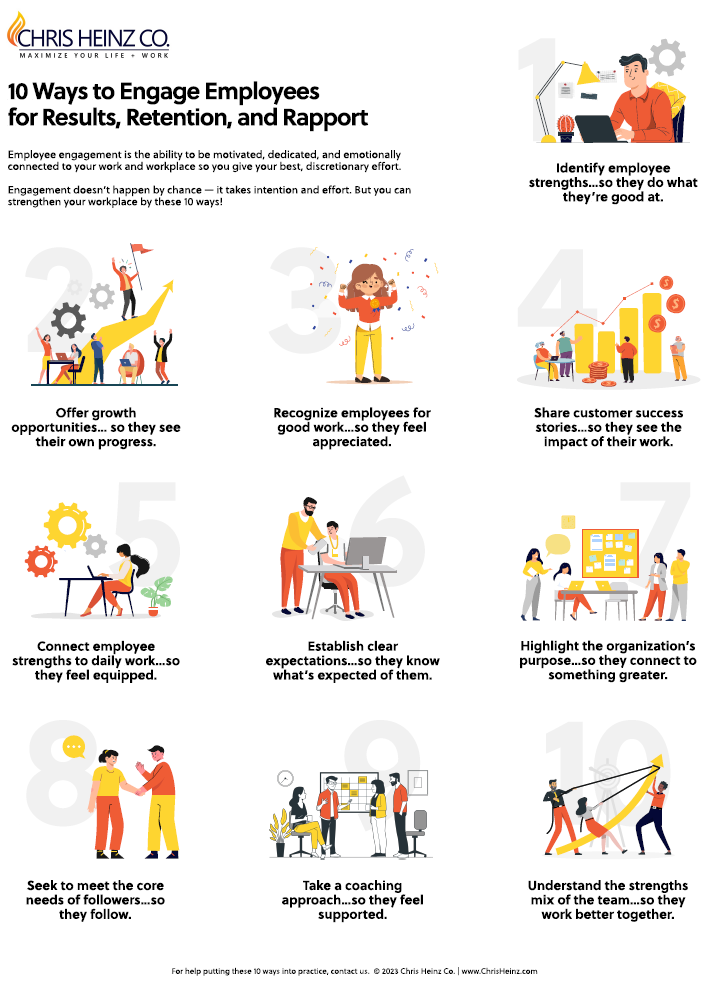10 Ways to Engage Your Employees
You can take small steps toward improving your engagement, and those small steps can yield big benefits. Includes downloadable list and infographic.
Employee engagement is the ability to be motivated, dedicated, and emotionally connected to your work and workplace so you give your best, discretionary effort. Engagement doesn’t happen by chance—it takes intention and effort.
Depending on your organization, employee engagement may seem like a heavy lift. Maybe you don’t have dedicated personnel to champion the effort. Maybe you don’t have the margin to put anything into place. Maybe you don’t know where to start.
We get it!
But you can take small steps toward improving your engagement, and those small steps can yield big benefits.
Here are 10 ways to engage employees for results, retention, and rapport. (At the end of this post, you can also download the list and a fun infographic.)
1. Identify employee strengths…so they do what they’re good at.
Strengths are activities that come naturally, produce great results, and bring satisfaction. Working from one’s strengths is an engagement best practice, but many people don’t do that.
2. Offer growth opportunities…so they see their own progress.
Today’s employees are looking for growth and development from their workplace. They want to grow in knowledge, skills, and personal insights, and track progress along the way.
3. Recognize employees for good work…so they feel appreciated.
Paying attention to employee contributions and recognizing them in ways that matter to them is important for motivation. Employee appreciation takes a variety of forms, find what fits.
4. Share customer success stories…so they see the impact of their work.
Workers want to know the impact they’re having on the lives of others. Find ways to gather and share stories of customers being helped by your products or services. It fuels engagement.
5. Connect employee strengths to daily work…so they feel equipped.
Employee strengths are the best means of delivering results, but many don’t think about connecting what they do best with their work. Aligning strengths with work is working smarter.
6. Establish clear expectations…so they know what’s expected of them.
A foundation of engagement is having clear expectations of role, outcomes, and measurement. Set clear expectations so workers know why they’re there and how success is being tracked.
7. Highlight the organization’s purpose…so they connect to something greater.
Engagement increases when employees can see the bigger picture beyond their daily tasks. Keep the organization’s purpose in front of workers so they feel part of a larger whole.
8. Seek to meet the core needs of followers…so they follow.
Successful leaders intentionally meet the core needs of followers by the way they relate, work, and lead. Employees aren’t robots—they’re human beings with human needs. Be responsive.
9. Take a coaching approach…so they feel supported.
Employees are looking for leaders to take a coaching approach that is inquisitive, supportive, growth-oriented, and accessible. They want near-term feedback that moves them forward.
10. Understand the strengths mix of the team…so they work better together.
Building strengths-based teams is an engagement best practice. Teams that utilize the strengths of each member are more profitable and productive than teams that do not.
(Cover Photo by Yan Krukau on Pexels)





